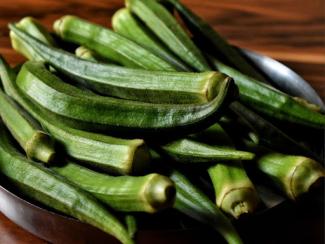
Okra is a green tuber that Black folk have eaten for centuries. Love it or hate it, there's no denying its importance in our history. Native to Ethiopia, the heat-loving vegetable is enjoyed everywhere, from Senegal to the South. Okra is called 'gumbo,’ short for the Angolan word 'kingombo.'
Food historian Michael Twitty believes okra arrived in the U.S. between 1710 and 1730. Like other crops, okra likely made its transatlantic journey with us. Once on new soil, okra became a staple in the gardens of enslaved people. They also roasted and brewed okra seeds as a coffee substitute.
Food historian Michael Twitty believes okra arrived in the U.S. between 1710 and 1730. Like other crops, okra likely made its transatlantic journey with us. Once on new soil, okra became a staple in the gardens of enslaved people. They also roasted and brewed okra seeds as a coffee substitute.
As with many foods, our ways of preparing okra vary, but the roots remain the same. Across the U.S., okra is often fried, stewed with tomatoes, or added to gumbo. It's eaten as Carúrú, a shrimp and okra stew in Brazil. Dominicans call it okra ‘molondrón’ and eat it with onion and peppers.
Food has always been more than just food to us. It's communal. It's healing. It's joyous no matter how it shows up on our plates.